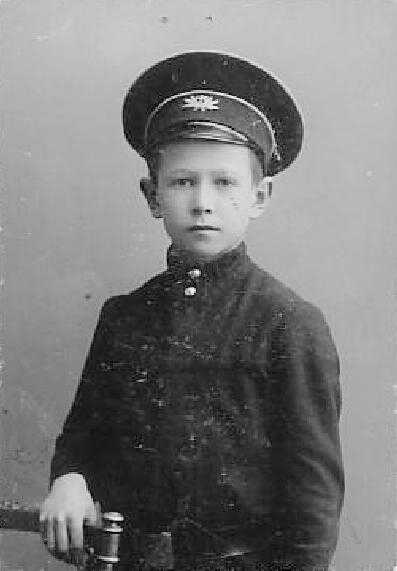
Figure 1.--This Russian school boy had his portrait taken in August 1912. We are not precisely sure what type of school he attended. Uniforms were commonly worn in Tsarist schools. |

|
Russian elementary children used to wear distinctive uniforms, both before and after the Revolution. Only since the disolution of the Soviet Union in 1992 did Russian school children stop wearing uniforms. HBC has little information on school in Imperial Russia. Girls were less likely to attend school. For the most part it was middle-class boys attending school. Rich children were educated at hone. Peasant and working class children often did not attend school. Many boys had their heads shaved. Russian revival style bloused tunic or military-style uniforms were often worn to school. A Russian artist has left us a fascinating imge of a rural school about 1865. Girls began attending school in large numbers after the Revolution. I'm not sure what boys wore to school in the 1920s, but by the 1930s military-styled uniforms were common. There does not seem to have been a standard uniform worn country-wide. Schools in Moscow and Lenningrad seem to have had quite strict uniform standards. During the Stalinist era there was a formal school uniform. It was a milotary-looking uniform consisting of a peaked cap, tunic, wide belts, ans red scarf. Yonger boys might wear short pants, sometimes with over-the-knee stockings. This uniform persisted even after Stalin's death in 1953. Basic education in the Soviet Union had 10 grades. Children began at 7 years and graduated at 16. Girls in grades 1-8 wore a brown dress with a black pinafore style-apron in front. Another source says a dark-blue or black dress with an Edwardian style pintafore white apron. Apparently the dress colors varied somewhat. After the breakup of the Soviet Union children no longer wanted to wear the Soviet-era uniforms. A HBC reader reports, "Russian children no longer wear school uniforms. My children go in school in whatever they want. This seems to vary among schools. A 2000 internet report indicated, "There are different styles of clothes in our school. Younger children have to wear the uniform. They don't like it very much, but, honestly, we like their suits. We find them very pretty. Their uniform is not equal. In the 1st grade children wear the red uniform, in the 2nd grade they wear the blue one, in the 3rd grade the uniform is green. Thus, we can always understend, what grade is the pupil from.
We are not sure at this time when Russian began funding state primary schools. We suspect that the Orthodox Church played a major role in the schools. HBC has little information on school in Imperial Russia. Girls were less likely to attend school. For the most part it was middle-class boys attending school. Rich children were educated at hone. Peasant and working class children often did not attend school. Many boys had their heads shaved. Russian revival style bloused tunic or military-style uniforms were often worn to school. A Russian artist has left us a fascinating imge of a rural school about 1865. We are unsure at this time about the uniform regulations. Images of rural primary school show the children wearing their ordinary dress. Uniforms seem much more common in urban schools. We are not sure about primary schools. But all of the secondary schoolswe see shows the children wearing military uniforms. We are not yet sure to what extent there was military training. We think there was a cadet program.
After the breakup of the Soviet Union children no longer wanted to wear the Soviet-era uniforms. A HBC reader reports, "Russian children no longer wear school uniforms. My children go in school in whatever they want. This seems to vary among schools. A 2000 internet report indicated, "There are different styles of clothes in our school. Younger children have to wear the uniform. They don't like it very much, but, honestly, we like their suits. We find them very pretty. Their uniform is not equal. In the 1st grade children wear the red uniform, in the 2nd grade they wear the blue one, in the 3rd grade the uniform is green. Thus, we can always understend, what grade is the pupil from. Mothers sew the costumes of different animals for the holidays. The younger children participate in a costume competition. And who's costume would be decided to be the best will get the prize, though the prizes should be given for their mothers. We older pupils popular clothes is jeans and shirts, T-shirts or sweaters. For special ocassions we wear the same clothes. We prefer very comfortable clothes." The old Tsarist Kadet program was reintroduced after the fall of Communism.
Related Chronolgy Pages in the Boys' Historical Web Site
[Main Chronology Page]
[The 1900s]
[The 1910s]
[The 1920s]
[The 1930s]
[The 1940s]
[The 1950s]
[The 1960s]
[The 1970s]
Navigate the Relate Boys Historical Clothing Style Pages
[Return to the Main country page]
[Return to the Main Russian page]
[Long pants suits]
[Short pants suits]
[Lederhosen]
[Kneesocks]
[Eton suits]
[Jacket and trousers]
[Blazer
[School sandals]
Navigate the Boys' Historical Clothing School Uniform Pages
[Return to the Main Russian school page]
[Return to the Main School Uniform Page]
[Return to the Main National School Uniform Page]
[Australia]
[England]
[France]
[Germany]
[Ireland]
[Italy]
[Japan]
[New Zealand]
[The Philippines]
[Poland]
[Scotland]
[South Africa]
[United States]
Navigate the Boys' Historical Clothing Web Page
[About Us]
[Activities]
[Chronology]
[Clothing styles]
[Countries]
[Debate]
[Economics]
[Garment]
[Gender]
[Hair]
[History]
[Home trends]
[Literary characters]
[School types]
[Significance]
[Transport and travel
[Uniform regulations]
[Year level]
[Other topics]
[Images]
[Links]
[Registration]
[Tools]
[Return to the Historic Boys' School Home]
